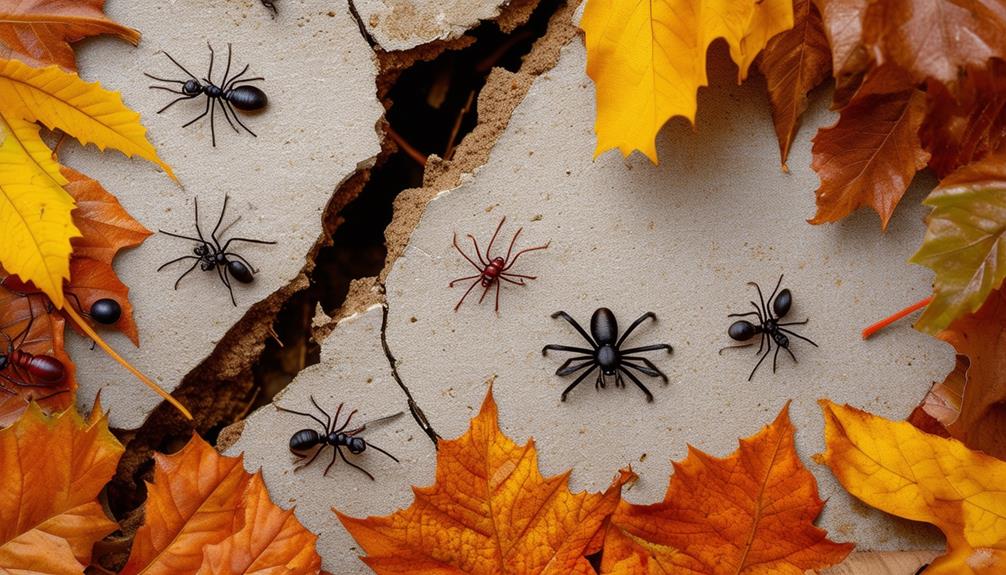Mice are small, nocturnal rodents that are known to invade homes and cause various problems. One concern that many people have is whether or not mice crawl into their beds while they sleep. Understanding the behavior of mice can help us better comprehend the likelihood of this occurrence and how to prevent it.
In this article, we will explore the factors that attract mice to beds, provide tips for keeping them away, and discuss the signs of a mouse infestation in your home. Mice are naturally curious and agile creatures, capable of squeezing through small openings and navigating tight spaces. While it is possible for mice to crawl into beds, it is relatively uncommon.
Mice are more likely to seek out areas that provide them with easy access to food, water, and shelter. However, in certain situations where these resources are scarce or inaccessible, mice may venture into beds in search of warmth or a cozy nesting spot. By understanding the factors that attract mice to beds, we can take necessary precautions to prevent these unwanted intrusions and maintain a clean and pest-free sleeping environment.
Understanding the Behavior of Mice
The study of mice behavior is crucial in order to gain a comprehensive understanding of their habits and tendencies.
One significant aspect of mouse behavior is their nesting habits. Mice are known to create nests in various locations, including within human homes. These nests provide them with a safe and warm environment to rest, reproduce, and raise their young. Mice often construct their nests using materials such as shredded paper, fabric, or insulation. They prefer secluded areas that are close to a food source, ensuring easy access to sustenance. Understanding these nesting habits is essential in comprehending the potential for mice to crawl into our beds.
The impact of mouse behavior on sleep quality is another important consideration. Mice are primarily nocturnal creatures, meaning they are most active during the night. Their activities, including nesting, foraging for food, and moving around, can generate noise that may disrupt human sleep. Additionally, mice can carry pathogens and parasites that may pose health risks, including allergies and diseases. These factors can lead to a decrease in the quality of sleep, causing individuals to feel fatigued and irritable during the day. Therefore, understanding mouse behavior and its impact on sleep quality is crucial in addressing the potential issues associated with mice crawling into our beds.
Transitioning into the subsequent section about factors that attract mice to your bed, it is important to explore various aspects that entice mice to venture into our sleeping spaces.
Factors that Attract Mice to Your Bed
Factors such as warmth, darkness, and the presence of food crumbs can make a bed an appealing habitat for small rodents. Mice are attracted to warm spaces as they seek shelter from the cold, and a bed provides a cozy environment for them.
Additionally, the darkness under the covers offers mice a sense of security and protection from potential predators. The presence of food crumbs in or around the bed acts as a strong attractant for mice, as they are opportunistic feeders and will seize any available food source.
The combination of these factors creates an environment that is highly attractive to rodents, leading them to crawl into your bed.
- Warmth: Mice are attracted to warm areas, and a bed provides a comfortable and warm space for them to nest.
- Darkness: The darkness under the covers offers mice a sense of safety and privacy, making the bed an ideal hiding spot.
- Food crumbs: Mice are drawn to the scent of food, and even small crumbs can be enticing for these opportunistic feeders.
The presence of mice in your bed poses potential health risks. Mice can carry various diseases, including hantavirus, leptospirosis, and salmonellosis, which can be transmitted to humans through contact with their droppings, urine, or saliva. Furthermore, their constant gnawing can damage the bed, leaving behind unsightly marks and potentially compromising its structural integrity.
Preventing mice from crawling into your bed is essential to maintain a hygienic and safe sleeping environment.
Prevention Tips to Keep Mice Away from Your Bed
One effective method for preventing mice from accessing your sleeping area is by implementing certain preventive measures. To create a mouse-proof sleeping environment, it is important to eliminate any potential entry points.
Start by inspecting your bedroom for cracks, holes, or openings that mice could use to enter. Seal these openings with caulk or steel wool to prevent mice from squeezing through.
Additionally, keep your bedroom clean and clutter-free. Mice are attracted to food and nesting materials, so make sure to store food in airtight containers and keep your sleeping area free from crumbs or food debris. Regularly vacuum and clean your bedroom to remove any potential food sources for mice.
There are also common myths about mice in beds that should be debunked. One myth is that mice only infest dirty and unkempt homes. In reality, mice can enter any home in search of food, water, and shelter. Another myth is that mice only come out at night. While mice are nocturnal animals, they can still be active during the day if they feel safe and undisturbed. It is important to be aware of these myths to better understand mouse behavior and take appropriate preventive measures.
By implementing these tips and debunking common myths, you can create a mouse-proof sleeping environment and minimize the risk of a mouse infestation in your home.
Transition: Understanding how to prevent mice from accessing your bed is crucial, but it is equally important to be able to recognize the signs of a mouse infestation in your home.
Signs of a Mouse Infestation in Your Home
Detecting a mouse infestation in your home can be done by recognizing certain indicators of their presence. One of the most common signs of a mouse infestation is the presence of mouse droppings. These droppings are small, dark, and pellet-shaped, resembling grains of rice. They are usually found along baseboards, in corners, and near food sources. Another telltale sign of a mouse infestation is gnaw marks. Mice have a strong need to gnaw on objects to keep their teeth sharp and to gain access to food. As a result, you may find gnaw marks on furniture, walls, electrical wires, and even food packaging. These marks are typically small, about 1/8 to 1/4 inch in diameter, and can help you determine if mice are present in your home.
To engage the audience and provide a visual aid, the following table outlines the signs of a mouse infestation:
| Indicator | Description |
|---|---|
| Mouse droppings | Small, dark, pellet-shaped droppings resembling rice grains |
| Gnaw marks | Small marks, about 1/8 to 1/4 inch in diameter |
Recognizing these signs can help you determine if you have a mouse infestation in your home. If you find evidence of mice in your living space, it’s important to take action to prevent them from entering your bed.
What to Do If You Find Mice in Your Bed
If faced with the unexpected presence of mice in our most intimate refuge, it is imperative to swiftly adopt measures to ensure their swift removal from our resting sanctuary.
Dealing with mice in your bedroom can be a distressing and unsettling experience, but it is important to handle the situation with caution and efficiency.
Firstly, it is crucial to identify how the mice are gaining access to your bed. Inspect the area thoroughly, paying close attention to any openings or cracks in the walls, floor, or furniture. These entry points should be sealed to prevent further intrusion. Additionally, ensure that any food sources are properly stored in airtight containers, as mice are attracted to readily available sustenance.
Once the entry points have been sealed and the environment has been made less appealing to mice, it is time to safely remove the rodents from your bed. It is recommended to use humane and non-lethal methods of trapping and releasing the mice. Live traps can be set near the bed, baited with food such as peanut butter or cheese. Once trapped, the mice can be released outdoors, far away from your home, ensuring that they do not return.
It is important to remember that mice can carry diseases and parasites, so it is advisable to wear gloves when handling traps or disposing of captured mice. After removing the mice, thoroughly clean and disinfect your bed and surrounding area to eliminate any traces of their presence.
By swiftly and safely addressing the issue, you can restore your bedroom to its peaceful state and ensure a good night’s sleep.
Frequently Asked Questions
Can mice crawl in my bed if I have a clean and tidy bedroom?
Mice can crawl into beds even in clean bedrooms due to their ability to squeeze through small openings. To prevent mice in bed, ensure all entry points are sealed, use mouse traps, and maintain cleanliness.
Is it true that mice are attracted to certain types of bedding materials?
Mice have preferences for certain types of bedding materials, which can attract them to certain areas. Additionally, mice behavior in different climates can influence their likelihood of entering beds.
Are there any specific smells that can deter mice from entering my bed?
Natural mouse repellents, such as peppermint oil or mothballs, claim to deter mice but lack scientific evidence. To prevent mice from entering your home, seal any cracks, keep food stored properly, and maintain cleanliness to eliminate potential nesting areas.
Can mice carry diseases that can be transmitted to humans through contact with the bed?
Mice can transmit diseases through contact with bedding, although the likelihood of transmission is generally low. The risk can be minimized by ensuring proper hygiene and regularly cleaning bedding. It is uncommon for mice to crawl in beds.
How long does it usually take for a mouse infestation to occur in a home?
The timeline for a mouse infestation in a home can vary depending on factors such as food availability and nesting opportunities. Signs of a mouse infestation include droppings, gnaw marks, and the presence of nests.





